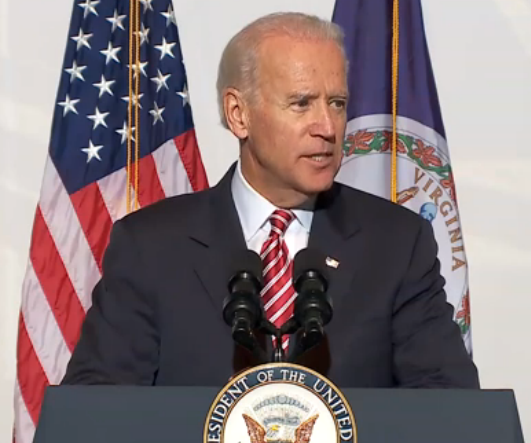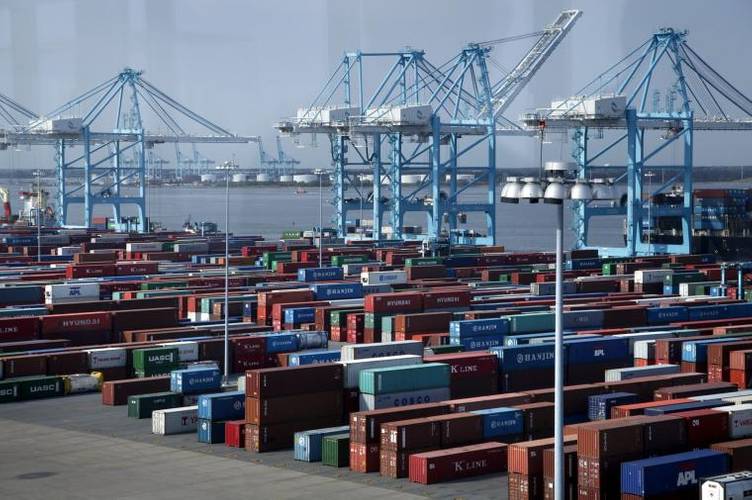Biden Champions Maritime at Port of Virginia
Carrying 95 percent of U.S. foreign trade, our maritime transportation system, which includes America’s ports, is a crucial component of our nation’s economy. And with our growing population—and the associated need to increase the amount of freight our transportation network carries—maritime’s value will only grow in the future.
This point is not lost on the Obama Administration, and it’s the reason why Vice President Joe Biden joined U.S. Senator Mark Warner (D-Va.), U.S. Rep. Bobby Scott (Va.-3), Virginia Governor Terry McAuliffe, Norfolk Mayor Paul Fraim, Virginia Port Authority CEO/Executive Director John Reinhart and me at the Port of Virginia in Norfolk on Wednesday. We were there to highlight the Port’s role as an economic engine for the region and its continued development of facilities and services in anticipation of the need to move greater freight volumes.
Secretary Foxx likes to remind people that we are expected to add nearly 100 million to our population by 2050—growth that’s projected to require our national freight system to move 14 billion more tons of freight each year than we currently do. Of that freight, 4 billion tons will come from other countries, much of which will have to move through America’s ports.
That’s what prompted Vice President Biden to say that maritime power is, “the single most important part in the economic chain that allows us to prosper.”
The Port of Virginia is making responsible steps to strengthen its contribution to that economic chain, including a new semi-automated motor carrier gate complex on one of its terminals—a project fueled by a recent $15 million grant from DOT’s TIGER program.
Throughout America’s history, ports have provided jobs, trade, commerce and passenger transportation for American communities, so it’s no surprise to that so many of our cities and towns have built densely around them. However, this can result in congestion on roadways near ports, slowing the movement of freight in and out of ports, increasing costs for shippers and challenging communities with traffic, noise and emissions. That’s why the Port of Virginia and other ports around the country are making strategic investments in the critical infrastructure we refer to as “the first and last mile.”
Once complete, the Port of Virginia’s new gate complex will benefit freight carriers and vehicular traffic alike. By expanding the port’s entrance from 4 to 22 lanes, it will ease access to the port while redirecting an estimated 700+ trucks every day from major boulevards and neighborhoods surrounding the Norfolk International Terminal and the adjacent Naval Station Norfolk.
The Virginia Port Authority has also taken additional actions to keep America moving by establishing one of our Nation’s first container-on-barge services.
The 64 Express operates like a marine highway on the 115-mile stretch of the James River between the Ports of Richmond and Hampton Roads, Virginia. It has moved more than 25,000 TEUs –that’s freight-speak for “20-foot equivalent units”— of cargo during the past three years, volume reducing wear and tear off landside infrastructure and cutting congestion on local roads. The innovative freight corridor has shown consistent growth since the service started, and is proving to be an increasingly viable option for domestic cargo transportation.
This Administration understands that forward-thinking and planning will enable our maritime transportation system to handle its share of the growing cargo volumes that we know are coming. That’s why we’ve awarded nearly $500 million dollars to 40 port and maritime projects –large and small, inland and coastal— through six rounds of TIGER. Maritime projects were well-represented in the sixth round of grants that Secretary Foxx announced earlier this month, with $74 million of the $600 million awarded going to maritime transportation infrastructure and maritime-related planning grants in seven states.
Reflecting on the growing importance of maritime shipping, Vice President Biden said on Wednesday, “It’s vital that we get this right.”
This Administration’s investments are preparing America’s maritime community to do just that.
Source: DOT Fast Lane blog













